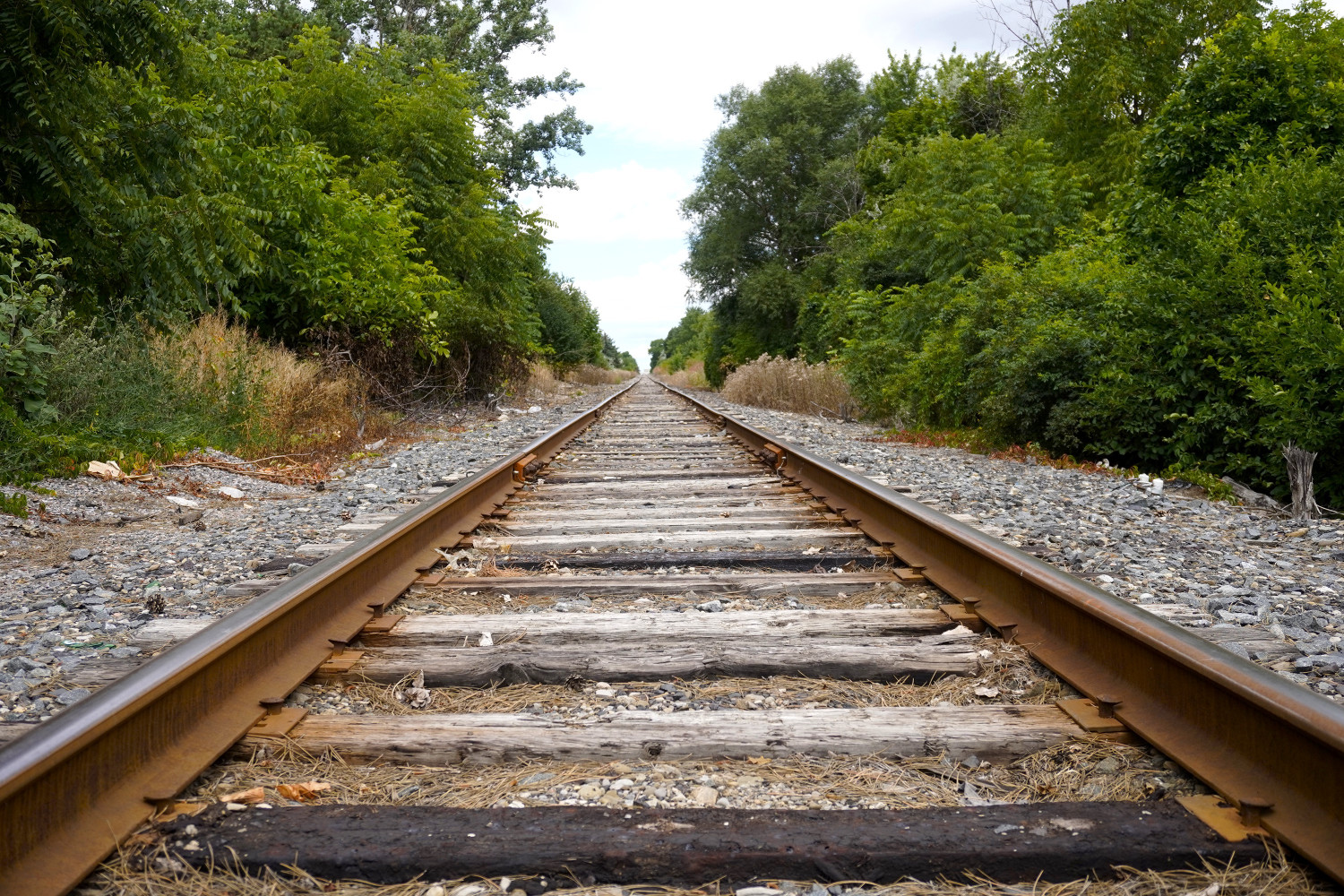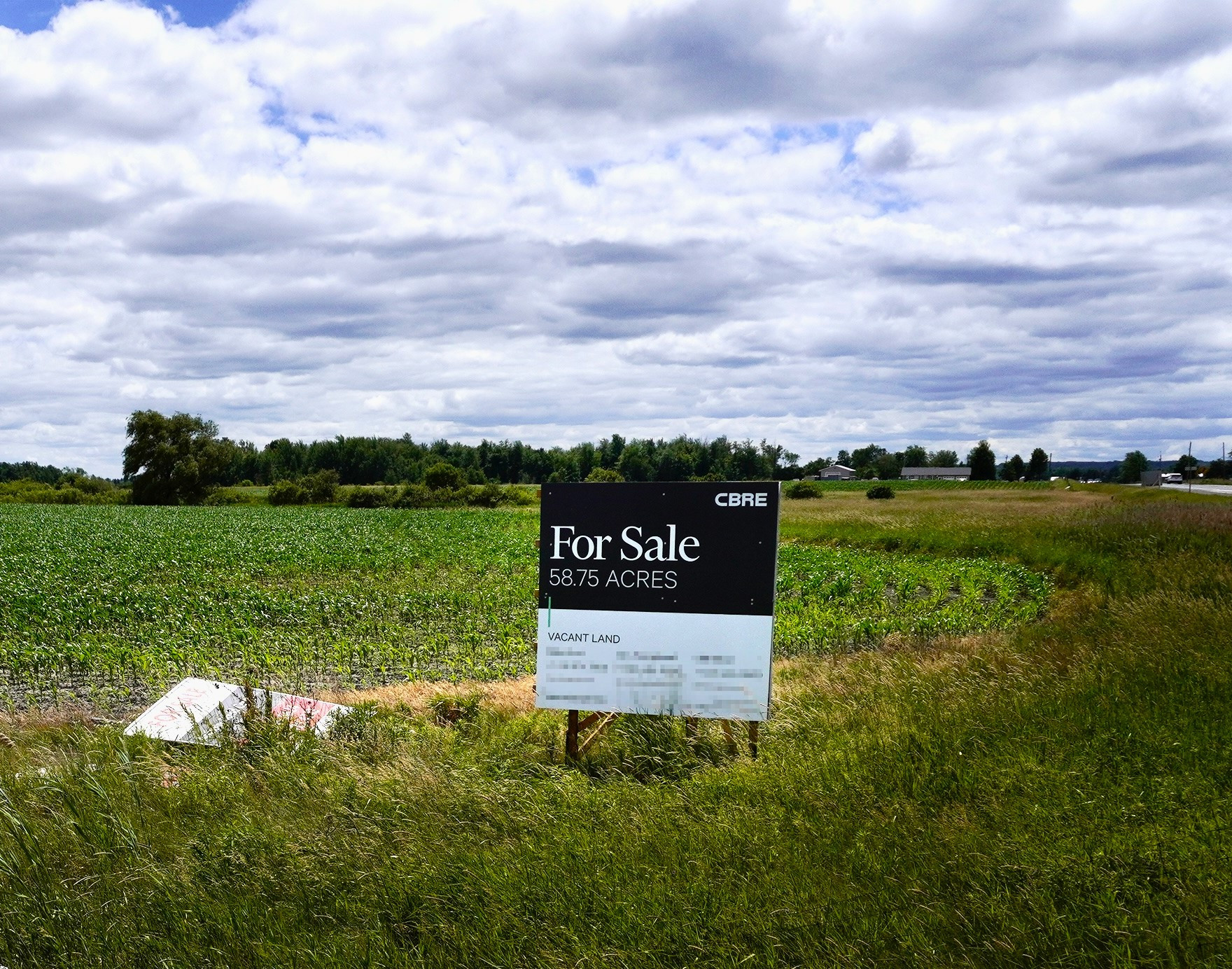
Region of Peel commits more money to protect greenspaces as developers line up to bulldoze land
In the face of rapacious development pressure to gobble up the last of Peel’s pristine lands, the Region has moved to protect some of it for conservation and public use.
Regional Council voted to amend guidelines for the Peel Greenlands Securement Program to increase the regional funding share from 50 to 70 percent. The move comes following two rounds of a three-year pilot study that allowed the Region to secure protected greenspaces in partnership with municipal and conservation authorities, limiting the need to rely on funding from upper levels of government.
The program was implemented in 2005 to help support the greenlands securement strategies and efforts of conservation authorities. It is supported by an annual budget contribution of $750,000 and, as of March 31, the balance for the project is over $2.5 million.

For sale signs are common across Peel, where greenspaces and agricultural lands are rapidly being transformed for development.
(Alexis Wright/The Pointer)
The program was launched during the golden years of greenlands protection. The Niagara Escarpment Plan was enacted in 1973, marking Canada’s first large-scale environmental land use protection strategy. In 2001, legislation to protect the Oak Ridges Moraine followed. All of this was solidified when the Greenbelt Act came into force in 2005. The three Acts together protect over two million acres of land against the threat of development, making Ontario’s Greenbelt the largest protected belt of land in the world. The Act covers a large portion of Ontario’s prime farmland as well as wetlands and other areas of rich biodiversity. All three of these Acts cover land within the Region of Peel, mainly in the Town of Caledon which is the largest municipality in the GTA (almost 50-square-kilometres bigger than Toronto).
Protecting greenspaces from development is critical to human health benefits and the safeguarding of key ecosystems and watersheds.
Recently the Greenbelt and other protected greenspaces have come under threat by development policies of various levels of government, particularly the Ontario PCs. In December 2022, the Doug Ford government introduced legislation that would remove 15 parcels of land from the Greenbelt to allow for development, causing an uproar from opposition parties, environmental organizations and the public.
“The Greenbelt protects what sustains us and provides enormous environmental, social and economic benefits to Ontario,” Edward McDonnell, CEO of the Greenbelt Foundation, wrote in an email to The Pointer following the introduction of the legislation.
The original 15 parcels of Greenbelt land slated for removal, before the PCs were forced to reverse their plan. The yellow box represents land that would be added.
(Government of Ontairo)
The Bill was set to remove 5,200 acres of land, substituted by adding 7,200 acres elsewhere, a scheme that was heavily criticized because the additional lands had no ecological or environmental connection to critically sensitive areas that require protection.
“You're still losing an extra 7,000 acres, making the Greenbelt bigger somewhere else doesn't magically save those 7,000 acres,” John Vanthof, the Agriculture Critic for the NDP, said. “It's not good math.”
While the PCs have since backtracked on their doomed Greenbelt plan, they continue to push the 413 Highway which will cut directly through parts of the Greenbelt, dissecting rivers and streams a total of 85 times. A previous investigation by The Pointer found 29 species at risk habitats along the path of the proposed 400-series highway.
Ford’s environmentally destructive policies are tied to the construction of more homes. Bill 23, which came into effect in late 2022, set the target of 1.5 million new homes by 2031. The province asked many of Ontario’s municipalities to sign onto housing pledges for their own targets. Across the Region of Peel, Mississauga must approve 120,000 new units, Brampton 113,000 and Caledon 13,000, all in less than eight years.
Caledon, which was once named ‘Ontario’s Greenest Municipality’ is home to a wealth of trails.
(Alexis Wright/The Pointer)
Prior to Bill 23 and the Greenbelt scandal, the PCs instructed upper-tier municipalities to update their growth plans out to the year 2051. The Region voted to expand its urban boundary by 11,000 acres, gobbling up prime farmland for the construction of new homes.
The vote received widespread pushback from the community — residents tried to protect Caledon’s natural heritage, and farmers were concerned about losing their land. While the boundary expansion remains in place — despite flip-flopping on development legislation at the hands of the PCs — the adoption of the new guidelines for the Greenlands Securement Program is one way the Region can ensure some protection of greenspaces and the biodiversity they contain.
The program involves regional agreements with Peel’s conservation partners including the Town of Caledon, Mississauga and Brampton, Credit Valley Conservation Authority (CVC), Toronto and Region Conservation Authority (TRCA), Bruce Trail Conservatory and the Oak Ridges Moraine Land Trust. During the first 13 years of the program (before the pilot was launched in 2018) the Region and its partners secured over 1,100 acres of land for permanent protection.
The recent staff report notes that a piece of feedback repeatedly heard from partners was that getting the 50 percent cost share portion under the agreement was extremely challenging given the limited funds available from the provincial and federal levels, and private organizations.
As a result, in 2018, the Region began a three-year pilot study to increase the Region’s cost share to 70 percent, leaving partners on the hook for the remaining 30 percent collectively. Within the first three years of the pilot study, the Program was able to secure five properties totalling 247 acres, at a cost of $1.75 million to the Region. The success of the pilot led Peel to continue the 70/30 cost share for an additional three years.
(Region of Peel)
During this three year period (2021-2024), the program secured another five projects totalling 445 acres at a cost of $8.2 million to the Region. The current funding formula is set to expire on June 28, but satisfied with the results, staff came to council recommending that the 70/30 cost share be adopted permanently, which was passed on consent.
“The extension of the 70 per cent cost share will enable Partners to continue acquiring ecological properties within Peel. This is especially important given that there is still limited federal and provincial funding for greenlands securement projects for Partners to fund the remaining 50 per cent land securement costs,” the staff report underscores. It also noted that should a project require more than 70 percent funding from the Region, staff will propose the request to council. This can only happen if the partner proves that all other avenues for receiving its cost share have been exhausted.
Greenlands securement projects include provincially significant wetlands, significant woodlands, Ecologically Significant Areas and areas with high populations of species at risk. There are a variety of ways partners can secure lands. The outright purchase of property is the easiest way but private landowners can also choose to donate or lease land for protection.
As the population of Peel continues to grow rapidly, securing and protecting greenspaces in conjunction with conservation authorities who can monitor and safeguard them, is a critical step toward environmental stewardship and sustainable lifestyles. Numerous health organizations around the world have stressed since the pandemic how important protection of greenspaces is to mental health and physical well being.
The decommissioned Orangeville Railway Corridor was purchased by the Region of Peel and its three lower tier municipalities to transform into a walking trail.
(Alexis Wright/The Pointer)
Peel’s largest securement, acquired in 2022, was the old and decommissioned Orangeville Railway Corridor, a 51-kilometre stretch of the former tracks spanning from the Orangeville-Caledon border, south to Streetsville.
The purchase went through in August 2022, valued at $5.8 million, after the Town of Orangeville decided to sell the corridor which was hemorrhaging funds — the Town was spending approximately $450,000 per year to keep the tracks operational. But since the purchase, the Region has provided little by way of plans to develop the corridor as a public greenspace.
The Town of Caledon had a survey open for public consultation until June 17 for feedback and development of the preliminary design. The City of Brampton is also in Stage One of the process.
In May, Mississauga’s Planning and Development Committee voted to approve an Official Plan and Zoning Bylaw Amendment to permit trail usage on the former corridor. It was the first step in the transformation of the former railway line into a multi-use trail.
Only a portion of the lands located in Mississauga associated with the corridor have been transferred over to the City. The amendments refer to a 1.5-kilometre stretch of the corridor running parallel to the Credit River south of Derry Road. The total area impacted is 8.4 acres.
“This has been a long time in coming and it’s going to create a wonderful multi-use trail on what used to be the old Orangeville rail line,” Councillor Brad Butt said in Committee, adding that he has not heard a single complaint about the proposal from members of the community.
A new trail has the potential to decrease the human impact on existing trail networks. With a growing population and the desire to “get back to nature” fuelled by COVID-19 lockdowns, many of the trail systems that currently exist in the GTA are overused. According to numbers from the Credit Valley Conservation Authority, foot traffic in its conservation areas and trails increased 69 percent between 2019 and 2020, from around 517,000 to nearly 875,000. This can lead to erosion, damage to plant life and the destruction of crucial habitats.
The construction of the Orangeville Corridor rail trail will also connect more broadly to a variety of other east-west networks of the Caledon Trailway, Trans Canada Trail, Bruce Trail, Oak Ridges Moraine Trail, Humber Valley Heritage Trail and the Greenbelt Cycling Route.
In 2022, The Pointer walked portions of the corridor which passed over bridges, intersected with many major roadways and beside recycling plants and steel manufacturers.
There is no set timeline for the completion of the trail.
Email: [email protected]
Twitter: @rachelnadia_
At a time when vital public information is needed by everyone, The Pointer has taken down our paywall on all stories to ensure every resident of Brampton, Mississauga and Niagara has access to the facts. For those who are able, we encourage you to consider a subscription. This will help us report on important public interest issues the community needs to know about now more than ever. You can register for a 30-day free trial HERE. Thereafter, The Pointer will charge $10 a month and you can cancel any time right on the website. Thank you
Submit a correction about this story


